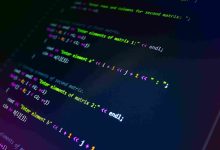Understanding the $ Programming Language: A Study in Minimalist Functional Programming
In the vast ecosystem of programming languages, each new creation brings unique philosophies and paradigms to computational problem-solving. Among these innovations, the $ language stands out for its minimalist design and adherence to the core principles of functional programming. Developed in 1983 by Prime Computer, Inc., this language offers a remarkably simple yet powerful approach to computation. This article explores the intricacies, purpose, and legacy of the $ language, shedding light on how it serves as a study in minimalism within the functional programming domain.
Origins and Context
The $ programming language was conceived during a period of rapid evolution in computer science. The early 1980s saw a burgeoning interest in functional programming, driven by a desire to simplify computation by focusing on mathematical functions and immutability. While many languages of this era sought to build comprehensive frameworks, $ took the opposite approach—stripping down functional programming to its most essential elements.
Prime Computer, Inc., the origin community, was known for its emphasis on computational efficiency and novel approaches to problem-solving. The $ language reflects this ethos by introducing a language structure that relies on the iterative application of a single substitution rule on well-formed strings.
Defining Characteristics
1. Minimalist Functional Programming
At its core, $ embodies the principles of functional programming in the simplest possible form. Unlike more complex languages that offer extensive libraries, advanced syntax, or intricate abstractions, $ relies solely on:
- Substitution Rules: The language applies a single substitution rule iteratively, transforming strings according to well-defined patterns.
- String Manipulation: Computation occurs entirely through operations on strings, avoiding variables, mutable states, or side effects.
2. Absence of Standard Features
Unlike most programming languages, $ lacks many standard features:
- No comments: There is no mechanism for embedding comments to explain code.
- No semantic indentation: Unlike Python, $ does not rely on visual indentation to signify block structures.
- No line comments: There are no provisions for single-line annotations or explanations.
3. Well-Formed String Constraints
Programs written in $ are governed by strict rules defining valid string formats. This constraint ensures that transformations produce predictable and valid results, aligning with the deterministic nature of functional programming.
Practical Applications and Limitations
The $ language is often considered a theoretical or pedagogical tool rather than a practical programming language for modern applications. Despite its limitations, it offers significant value in specific contexts:
Applications:
-
Educational Tool:
- The simplicity of $ makes it ideal for teaching the foundational principles of functional programming.
- It helps students grasp the concepts of substitution, immutability, and transformation without the distraction of complex syntax or additional features.
-
Theoretical Research:
- Researchers can use $ to study the theoretical limits of minimalist functional languages.
- It serves as a framework for exploring string manipulation algorithms and their computational efficiency.
Limitations:
- Lack of Practicality:
- The absence of advanced features and practical utilities makes $ unsuitable for real-world programming tasks.
- Steep Learning Curve:
- Ironically, the minimalist design can pose challenges for beginners, as there is little scaffolding to guide users in developing or debugging programs.
The $ Language Ecosystem
Despite its conceptual significance, the ecosystem surrounding $ is sparse. Several indicators highlight this:
- No Central Repository: There are no central package repositories to facilitate code sharing or collaboration.
- No Open Source Community: Unlike many modern languages, $ has not developed an active open-source community to expand its capabilities or documentation.
- No GitHub Presence: Key metrics, such as repository descriptions, first commits, and issues, are absent for $ on GitHub.
Legacy and Influence
While the $ language may not be widely used today, its legacy persists in the form of inspiration for minimalist programming languages. It exemplifies the idea that programming does not require complex syntax or extensive toolsets to achieve computational objectives. Instead, it demonstrates the power of fundamental principles, encouraging developers and researchers to think critically about how programming languages are designed and used.
The simplicity of $ also raises questions about the balance between language complexity and usability. By stripping programming down to its core, $ challenges traditional notions of what makes a programming language effective.
Conclusion
The $ programming language is a remarkable experiment in the realm of functional programming. It offers a minimalist approach, relying solely on substitution rules and string manipulation, devoid of the complexities found in other languages. While its practical applications are limited, $ serves as a valuable educational and theoretical tool, inspiring new ways of thinking about computation and language design.
As we continue to explore the boundaries of programming languages, $ stands as a testament to the power of simplicity. Its lessons remind us that even the most minimalistic tools can teach us profound insights about the nature of computation and programming paradigms.




